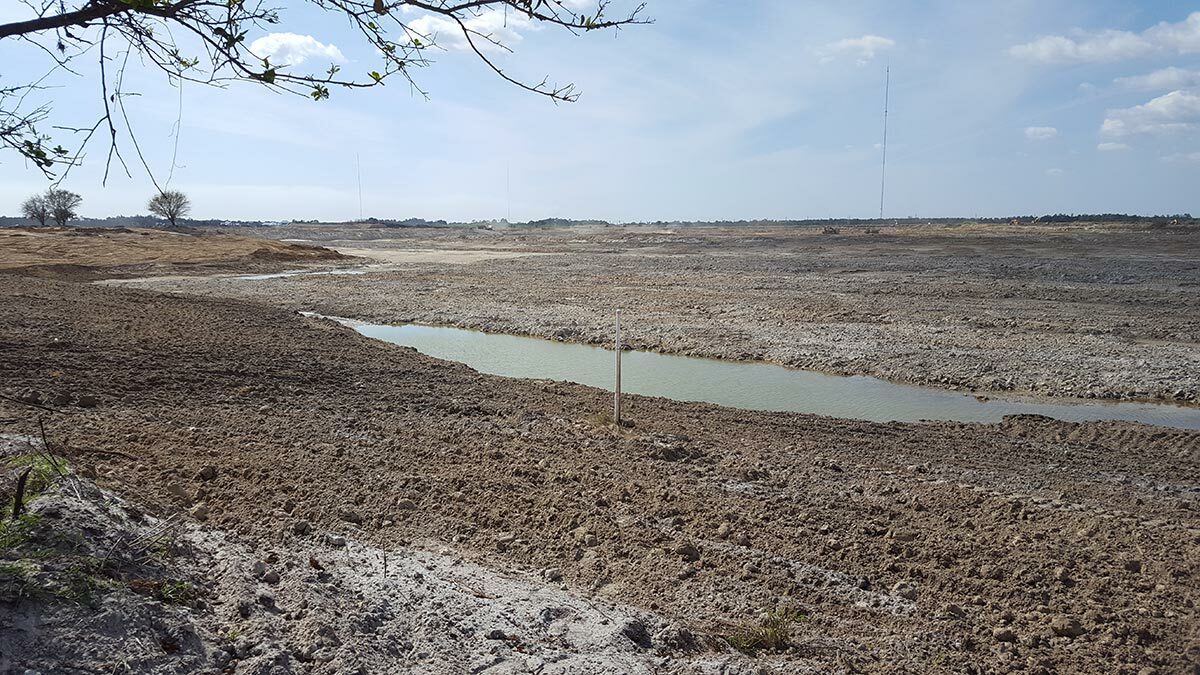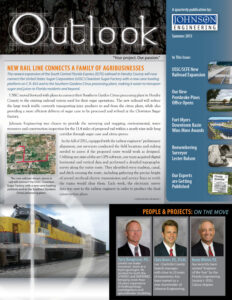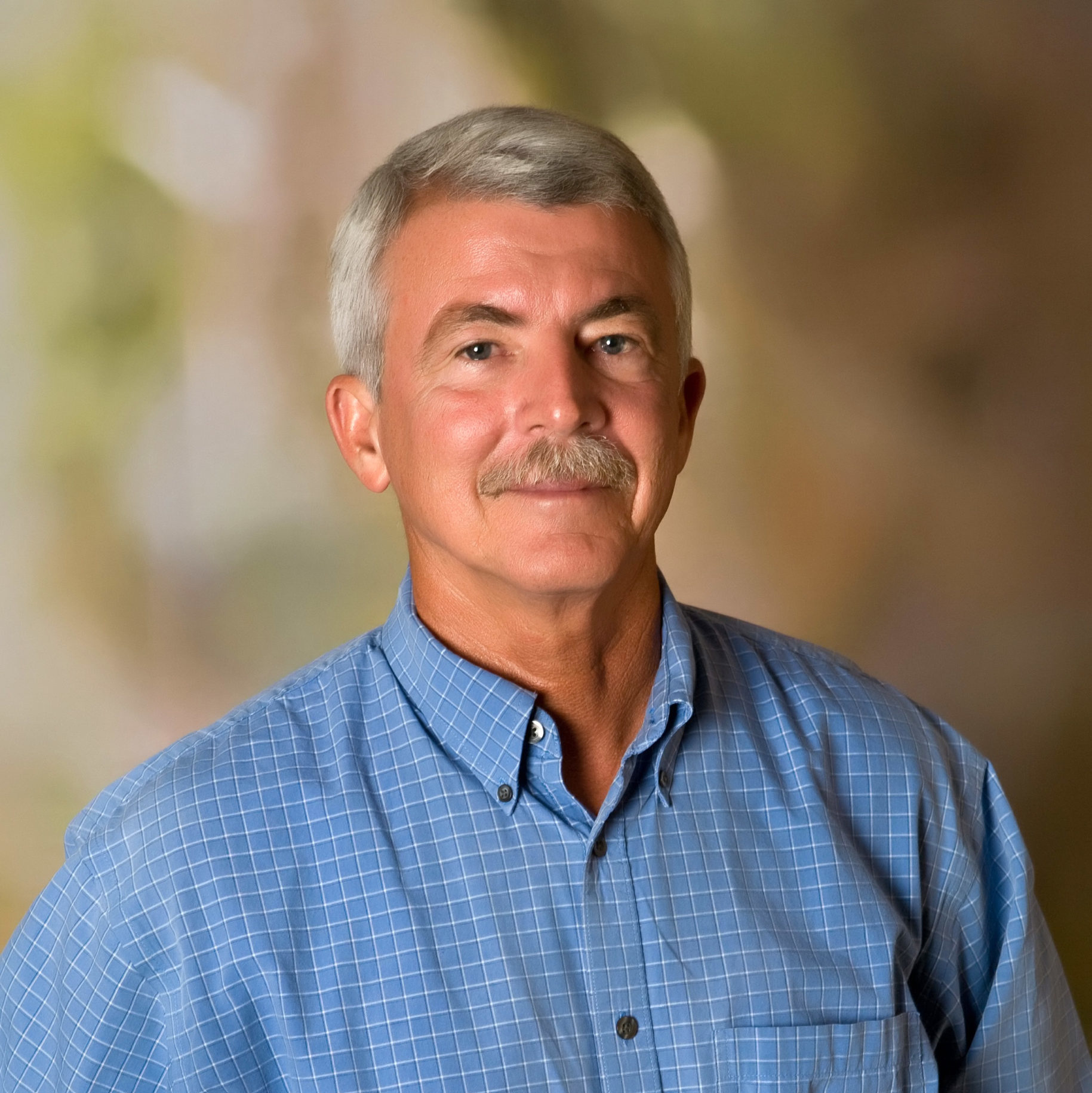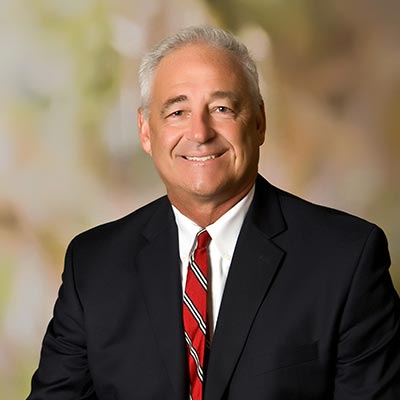USSC moved forward with plans to connect their Southern Garden Citrus processing plant in Hendry County to the existing railroad system used for their sugar operations. The new railroad will reduce the large truck traffic currently transporting juice products to and from the citrus plant, while also providing a more efficient delivery of sugar cane to be processed and refined at the Clewiston Sugar Factory.
Johnson Engineering was chosen to provide the surveying and mapping, environmental, water resources and construction inspection for the 11.4 miles of proposed rail within a nearly nine mile long corridor through sugar cane and citrus groves.In the fall of 2011, equipped with the railway engineers’ preliminary alignment, our surveyors conducted the field locations and staking needed to assess if the proposed route would work as designed. Utilizing our state-of-the-art GPS software, our team acquired digital horizontal and vertical data and performed a detailed topographic survey along the entire route. They identified every roadway, canal, and ditch crossing the route, including gathering the precise height of several overhead electric transmission and service lines to verify the trains would clear them. Each week, the electronic survey data was sent to the railway engineer in order to produce the final construction plans.
Within two months, all survey field work concluded that portions of the alignment needed to be relocated so it would be more conducive to farming operations. Our survey team provided a topographical survey of the revised portions of the route, again quickly collecting and providing data for preparing the construction plans. After two route modifications, the final route and necessary data to produce the construction plans was completed in the spring of 2012.
In addition to survey, our water resources and environmental teams were tasked with helping to obtain the necessary permits to construct this large undertaking. This project required simultaneously permitting and modifying six separate permits for different entities, all owned by USSC. This allowed the railroad to be the accessory use and utilize the existing water management system in each permit. One area did not have a permit controlled by USSC, but had its own water detention designed specifically for the portion of the railroad passing through it. Our team assisted in acquiring a water use permit to dewater this area in order to allow installation of culverts and to demuck small portions of the project area.
Our ecologists conducted wetland jurisdictional determinations and prepared protected species surveys in support of the permitting of the project. Formal consultation with the U.S. Fish and Wildlife Service for the project’s effect on the Florida panther was required for the project, which typically takes well over a year to accomplish. Our environmental team implemented an approach to streamline the process and was able to secure the federal permit and biological opinion from the U.S. Fish and Wildlife Service only eight months after the Public Notice for the project was advertised, keeping the project ahead of schedule.
Construction of the railroad began in late 2012. Our construction engineering inspection (CEI) team worked closely with the contractor to provide on-site monitoring, inspection, testing, and reporting. Our inspectors took daily density tests of rock materials being used along the rail route to ensure permanent compaction. This work included pulling sample rock to be lab tested to verify they met certain specifications to allow proper drainage. Our team also produced weekly construction inspection reports for the Stormwater Pollution Prevention Plan as part of our National Pollutant Discharge Elimination System (NPDES) monitoring.
In May of 2013, our surveying team was called back in to perform the remainder of construction staking needed to keep the project on schedule. Within one week our field crew had the clearing limits staked for the remainder of the route and have begun working on final alignment stakes and grades.
Overall this has been a unique project that has allowed each of our market groups to work consecutively and simultaneously together to successfully see this project through from beginning to end.
For more information, contact [email protected].


































































